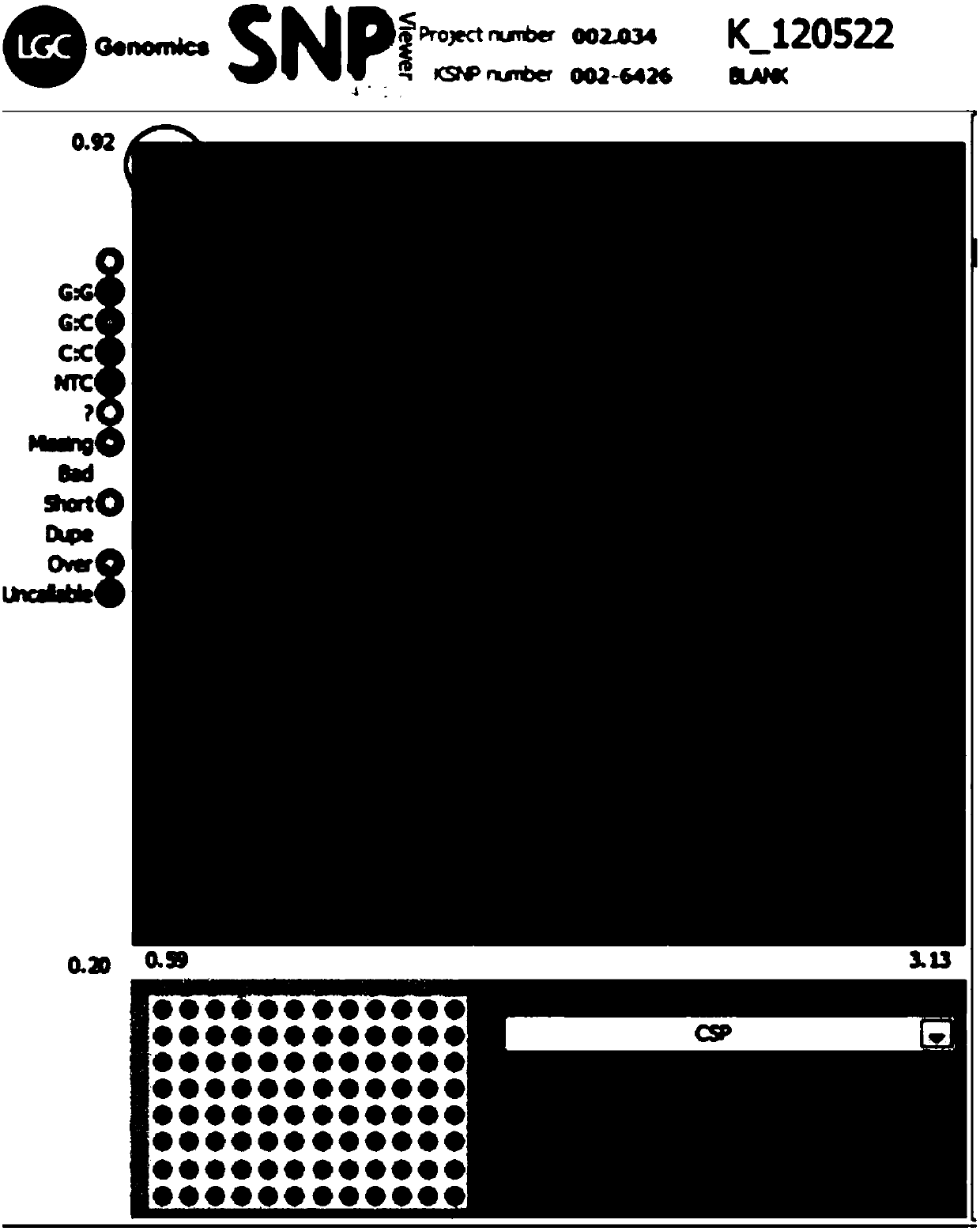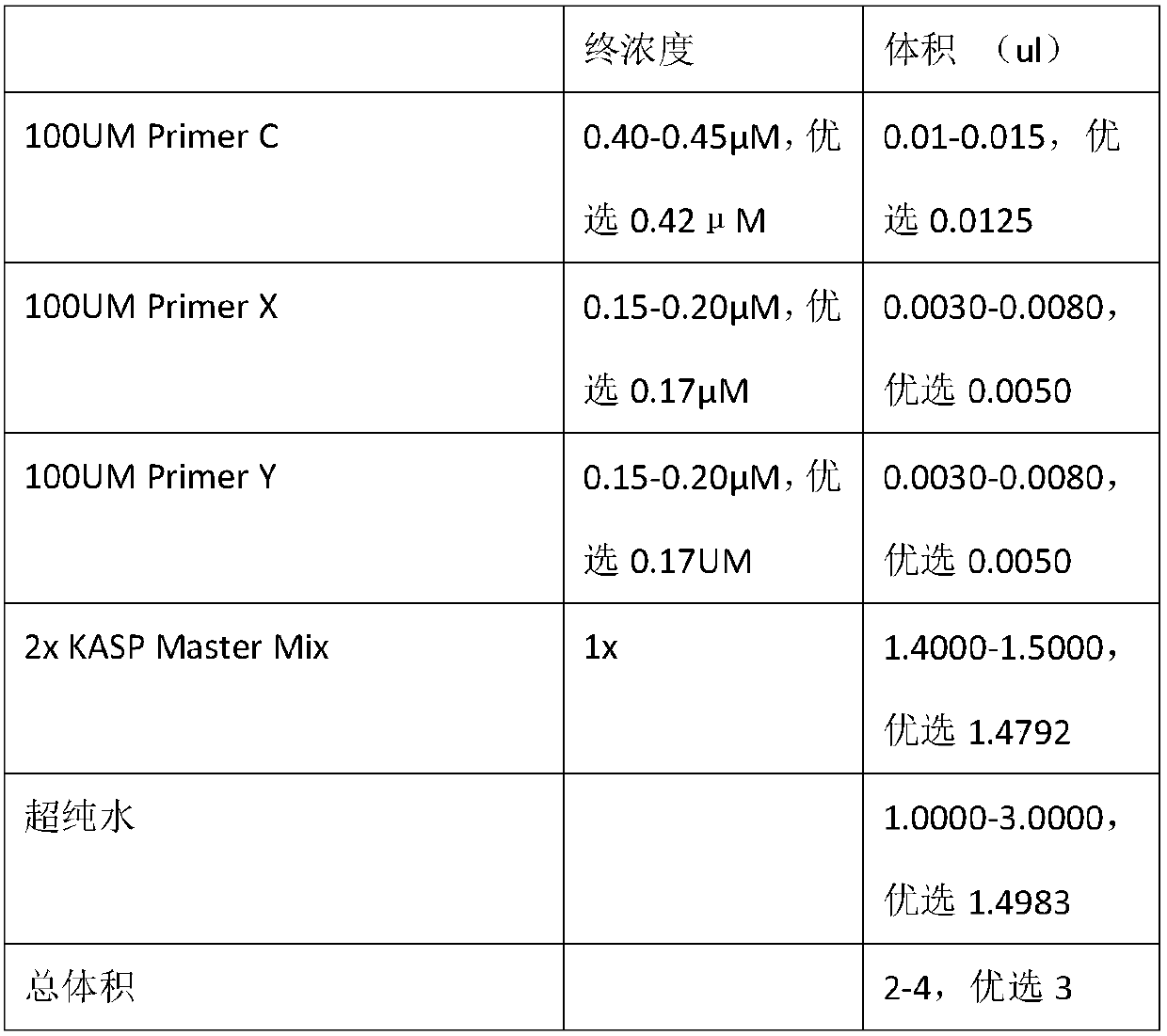SNP (Single Nucleotide Polymorphism) molecular marker for detecting sterile gene pms3 (photoperiod-sensitive male sterility 3) of paddy rice
A molecular marker and rice technology, which is applied in the direction of recombinant DNA technology, microbial measurement/testing, DNA/RNA fragments, etc., can solve the problems of unintuitive result verification, cumbersome primer design, and affecting genotyping efficiency, so as to avoid health problems. Threats, solutions to long detection cycles, and the effect of reducing investment costs
- Summary
- Abstract
- Description
- Claims
- Application Information
AI Technical Summary
Problems solved by technology
Method used
Image
Examples
Embodiment 1
[0040] Embodiment 1 common rice variety detection
[0041] The marker K_120522 was used to verify the KASP primary screening reaction of 8 gene donor materials including rice varieties GD-1S, 7001S, and Peiai 64S containing the pms3 gene and 27 other rice varieties without the restorer gene. The results are shown in Table 3. The rice varieties containing the pms3 gene were all detected as G-type bases at the marker test sites, and the base C was detected at the test sites by 27 non-donor rice varieties, which proved that the molecular marker K_120522 and its primers provided by the present invention The group detection results are accurate and specific.
[0042] Table 3: Marker K_120522 Test Genotyping Data
[0043]
[0044]
[0045]
Embodiment 2
[0046] Embodiment 2 Natural population detection
[0047] SNP marker K_120522 was validated by natural population using 95 materials. The 95 materials include 34 common hybrid rice materials and 60 core rice breeding materials. Marked in natural group typing results such as figure 1 As shown, 95 materials were clearly classified. Except for the homozygous pms3 detected in the core rice breeding material Guangxiang 24S, 34 common rice hybrid varieties and the remaining 59 materials were tested to be free of pms3, which is in line with the application of the pms3 gene in actual breeding. The current situation that is still lacking has verified the feasibility and accuracy of the SNP molecular marker detection method developed by the present invention, which can be used for identification of pms3 gene and assisted selection breeding.
PUM
 Login to View More
Login to View More Abstract
Description
Claims
Application Information
 Login to View More
Login to View More - R&D
- Intellectual Property
- Life Sciences
- Materials
- Tech Scout
- Unparalleled Data Quality
- Higher Quality Content
- 60% Fewer Hallucinations
Browse by: Latest US Patents, China's latest patents, Technical Efficacy Thesaurus, Application Domain, Technology Topic, Popular Technical Reports.
© 2025 PatSnap. All rights reserved.Legal|Privacy policy|Modern Slavery Act Transparency Statement|Sitemap|About US| Contact US: help@patsnap.com



